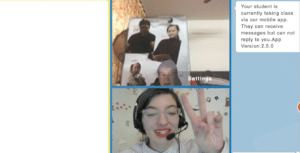Reading “The Lorax” is a great lesson for 2nd, 3rd, 4th, and 5th grade intermediate or advanced ESL students. Here is a lesson on The Lorax using the PPP template.

- Advanced Intermediate
- Elementary ESL, K-5, Primary School
- Decoding words
Use this link and share it with your student:
https://www.chrisrossarthur.com/uploads/3/8/5/9/38596187/dr._seuss_the_loraxbokos-z1.pdf
This lesson is ideal for teaching “sounding out” phonics, or “decoding”
This lesson is full of fantastical words (words that are “not real”). So, why use it to teach ESL? Well, The Lorax is ideal for teaching phonics and decoding. Your student will need to sound out any word they do not know; and there will be many words with unknown identities.
The Lorax is an ideal text to help students identify the sounds of each individual letter in the word and then blending those sounds together.


Dr. Seuss texts are ideal to help students identify the sounds of each individual letter in the word and then blending those sounds together.
1. Teach Pre-vocabulary
Remember the importance of pre-reading the text with the student. Part of this entails analyzing the title and the cover image and discussing what the student thinks the text might be about:
Teach the Pre-vocabulary: introduce these unfamiliar terms to students before they begin to read the text. Don’t teach them all at once! Teach them before you arrive at the page.
Pg 45 factory– a building or group of buildings where things are made by a machine
Pg 44 business– what someone does to make money
Pg 44 regardless– even though, despite, ignoring the rest
Pg 45 shopping– buying something
Pg 46 nuisance– annoying, something you don’t like, it bothers you
Pg 46 gripes– complaining, being negative, saying grumpy stuff, saying angry things
Pg 50 machinery– lots of moving parts that make something (show photo or video of an example)
Pg 53 gills– what fish you use to breathe (show picture)
Pg 53 fins– what fish use to swim (show with your hands and a picture)
2. Student reads the text and answers CCQ: Comprehension Checking Questions
Use these Comprehension Checking Questions to ensure your ESL student understands the material.
https://www.chrisrossarthur.com/uploads/3/8/5/9/38596187/dr._seuss_the_loraxbokos-z1.pdf
How is this house different from others?
What is the Once-ler looking for?
What kind of animal is the Lorax?
Do you want to live in this town?
Pg. 13 What is he putting in the bucket??
Pg. 14 What is the Once-ler doing? Counting, pulling up the pail
Pg. 14 What do you think “gruvvulous” means? Is it good or bad?
Pg. 19 Would you like to live here?
Pg. 19 how do the Truffula trees smell?
Pg. 20 what do you think Truffula fruits taste like?
Pg. 21 How do the fish feel?
Pg. 24 what is a thneed?
Pg. 29 why do you think the Lorax is angry?
Pg. 31 What is a thneed? What can you use it for?
Pg. 36 Who is making thneeds? Why?
Pg. 39 How many threads are they making?
Pg. 40 How do the animals feel? Why?
Pg. 41 Who are the Bar-ba-loots? What did they eat?
3. Find the “slant rhymes” in The Lorax
Slant rhymes: two words that have only their final consonant sounds and no preceding vowel or consonant sounds in common (such as stopped and wept, or parable and shell). Ask the student to find all the slant rhymes in the text. There are many. Here are some:
Sneeze
Trees
Tongues
Lungs
Puffed
Tuft
I hope you enjoy teaching this ESL lesson. If you have any tips to improve it, please share in our ESL Teacher Forum.






